Context & Problem
On 2015-2016 a public university in Brazil, focused on preparing local teachers for a digital world, received some government investment in order to develop its projects. One of the biggest projects was regarding some online courses, which coordinators received feedback from students (who actually are the teachers mentioned previously) that it should be more interactive: “a lot of text” or even “good content but should be more interactive” in the students words. The challenge was to understand the students’ journey throughout the course and at what moments it would be opportune to make the content more interactive and with what type of resource, considering not only it but also people on the backstage who worked on that like tutors, course teachers and IT support to make a real significant impact in students learning.
Process
This work followed at a major part of the time, the methodology called INTERA (Intelligence, Educational Technologies, and Accessible Resources), which contains 7 steps. It is an iterative methodology, created for the development of any kind of educational software – details about this can be reached out on the book “Objetos de Aprendizagem, V.2“, which I’m one of the authors.
The first step was to understand the whole experience of the students, from the moment they heard about the course offer, how and where they enroll, the course itself (modules and content in each of them), how and when happened the interactions with other students or tutors and teachers, as well as situations in which they contact the IT support. This step was important to identify for how long the students had no interaction and what types of interaction they had.
After that, I started the interview sessions with students and the course teachers to map the points that needed improvements in the course. Also listened to suggestions and took some feedback about their journeys. From those, we discovered that the accessibility module was a relevant point of the course because the students must be more and more prepared to think about it, and once they were also teachers, they felt that they must be ready to work under the inclusion perspective with their own students. This confirmed the same impression that the coordinator had, once she was already studying this subject for some time and doing many investigations.
The next step was to prepare some artifacts around goals, when and in which situation the course could be used (thinking about re-use is one of the most important points of the methodology) and some functionality requirements.
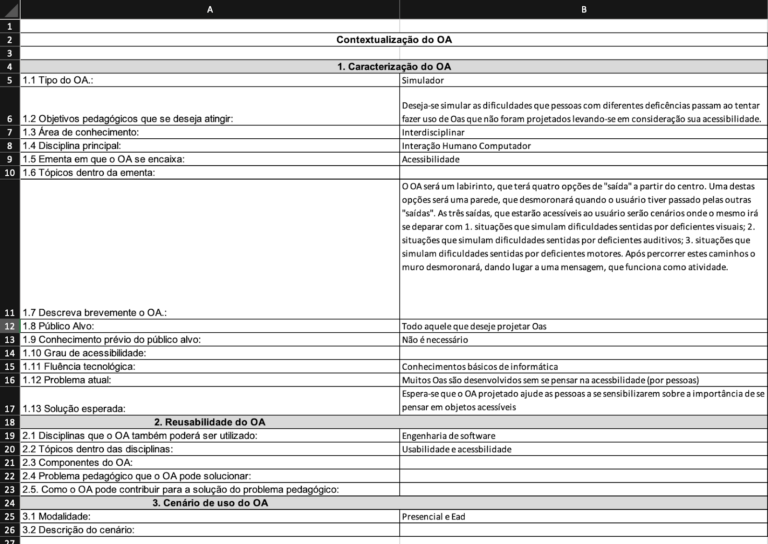

Artifacts.
After that and with all the requirements, the sketching was started by me.
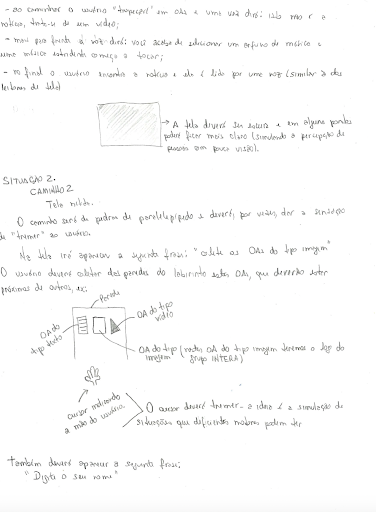

Sketching/Wireframes.
There were some discussion with users and specialists to refine the main idea, particularly in the users tasks and affordance aspects. Them, a storyboard was made in partnership with a vendor, who was responsible for the development of the solution. The storyboard was interactive so a usability test with real users could be done plus a heuristic evaluation conducted by me.
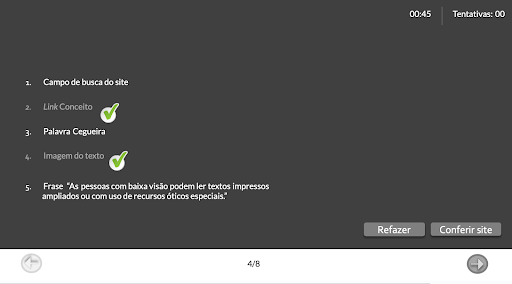
Storyboard.
Solution
The proposed solution was to add a simulator of three different disabilities: blindness, motor, and deafness to the accessibility module of the course. The user at first had contact with a friendly tone about disabilities understanding what Brazilian laws say about it, the meaning, and some videos. After that, the user became able to choose one of the simulations:
- Blindness: The participants had a mission to use a screen assistant and complete some actions using it;
- Motor: The participants had the challenge to use some special boards to build words and to complete phrases according to the comprehension they had;
- Deafness: The experience of watching a movie about deafness with and without song to compare their understanding.
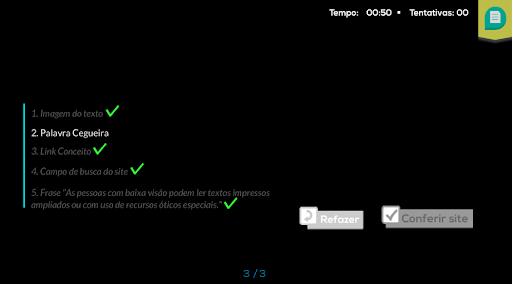

Simulator screens.
Results & Impact
Students approved the simulator and felt excited about having worked together on this solution, in a feedback meeting they told that the simulator made a difference in the way they think about disability and how hard can be the use of readers in some screens.
The simulator was presented in the Special Group of Informatics in Education & Federal University of Uberlândia, Minas Gerais (Brazil) and received an honorable mention on the event.
After that, this software plus other 34 I worked on were registered in INPI (National Institute of Industrial Property – Brazil).
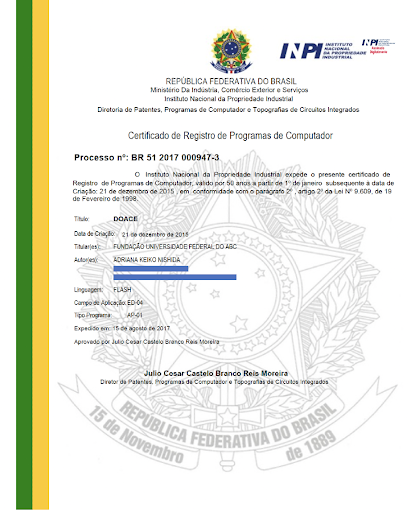
Brazilian document as evidence of the software registration.





